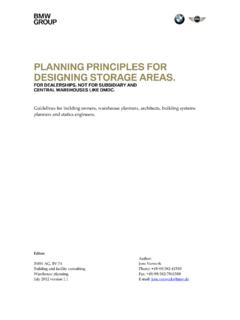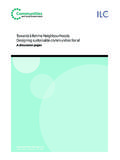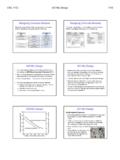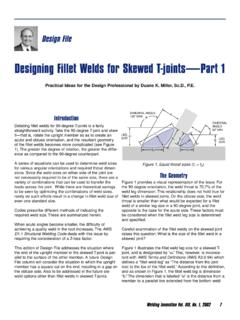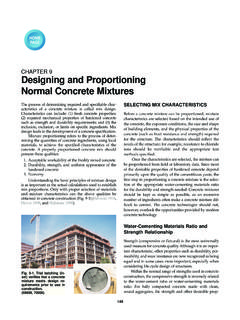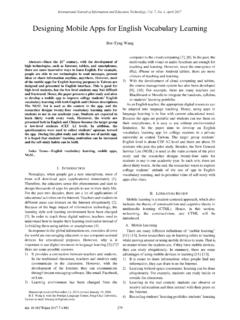Transcription of Andy Farnell - aspress.co.uk
1 Excerpt fromDesigning SoundPractical synthetic sound design for film, gamesand interactive media using dataflowAndy FarnellASPA pplied Scientific Press 2006, 2008 Andrew James Farnell . All rights reservedPublished by Applied Scientific Press, London, in right of Andrew James Farnell to be identified as the author of this work is asserted inaccordance with the Copyright, Designs and Patents Act to abridged versionThis excerpt may be freely copied and distributed solely forpurposes of teaching and promo-tion of the full textbook, provided this notice is not removed. For all other other uses pleasecontact the more information on designing Sound visit the websiteat textbook is typeset using LATEXon a DebianGNU/Linux 11 10 09 085 4 3 2 1 Online tutorial series:February 2006 First printed edition:September 2008 Abridged Pure Data notes: October 2008iiiContents1 Introduction.
2 12 Starting with Pure Data .. Pure Data .. 5 Installing and running Pure Data .. 6 Testing Pure Data .. How does Pure Data work? .. 7 Objects .. 8 Connections .. 8 Data .. 8 Patches .. 8A deeper look at Pd .. 9 Pure Data software architecture .. 9 Your first patch .. 9 Creating a canvas .. 9 New object placement .. 10 Edit mode and wiring .. 11 Initial parameters .. 11 Modifying objects .. 12 Number input and output .. 12 Toggling edit mode .. 12 More edit operations .. 12 Patch files .. Message data and GUI boxes .. 13 Selectors.
3 14 Bang message .. 14 Bang box .. 14 Float messages .. 14 Number box .. 14 Toggle box .. 15 Sliders and other numerical GUI elements .. 15 General messages .. 16 Message box .. 16 Symbolic messages .. 16 Symbol box .. 16 Lists .. 17 Pointers .. 17 Tables, arrays and graphs .. Getting help with Pure Data .. 18 Exercise 1 .. 18 Exercise 2 .. 19 Exercise 3 .. 193 Using Pure Data .. Basic objects and principles of operation .. 21 Hot and cold inlets .. 21 Bad evaluation order .. 21 Trigger objects .. 22 Making cold inlets hot .. 22 Float objects.
4 22 Int objects .. 23 Symbol and list objects .. 23 Merging message connections .. Working with time and events .. 23 Metronome .. 23A counter timebase .. 24 Time objects .. 24 Select .. Data flow control .. 25 Route .. 25 Moses .. 26 Spigot .. 26 Swap .. 26 Change .. 26 Send and receive objects .. 27 Broadcast messages .. 27 Special message destinations .. 27 Message sequences .. List objects and operations .. 28 Packing and unpacking lists .. 28 Substitutions .. 29 Persistence .. 29 List distribution .. 30 More advanced list operations.
5 Input and output .. 30 The print object .. 31 MIDI .. Working with numbers .. 33 Arithmetic objects .. 33 Trigonometric maths objects .. 33 Random numbers .. 33 Arithmetic example .. 33 Comparative objects .. 34 Boolean logical objects .. Common idioms .. 35 Constrained counting .. 35 Accumulator .. 35 Rounding .. 36 Scaling .. 36 Looping with until .. 36 Message complement and inverse .. 37 Random selection .. 37 Weighted random selection .. 37 Delay cascade .. 38 Last float and averages .. 38 Running maximum (or minimum) .. 38 Float lowpass.
6 384 Pure Data Audio .. Audio objects .. 39 Audio connections .. 39 Blocks .. 39 Audio object CPU use .. Audio objects and principles .. 40 Fanout and merging .. 40 Time and resolution .. 40 Audio signal block to messages .. 41 Sending and receiving audio signals .. 41 Audio generators .. 41 Audio line objects .. 42 Audio input and output .. 43 Example: A simple MIDI monosynth .. 43 Audio filter objects .. 44 Audio arithmetic objects .. 44 Trigonometric and math objects .. 44 Audio delay objects .. 455 Abstraction .. Subpatches .. 47 Copying subpatches.
7 47 Deep subpatches .. 48 Abstractions .. 49 Scope and $0 .. Instantiation .. Editing .. Parameters .. Defaults and states .. Common abstraction techniques .. 53 Graph On Parent .. 53 Using list inputs .. 54 Summation chains .. 55 Routed inputs .. 556 Shaping sound .. Amplitude dependent signal shaping ..57 Simple signal arithmetic .. 57 Limits .. 59 Wave shaping .. 59 Squaring and roots .. 61 Curved envelopes .. Periodic functions .. 62 Wrapping ranges .. 63 Cosine function .. Other functions .. 64 Polynomials.
8 64 Expressions .. Time dependent signal shaping .. 65 Delay .. 65 Phase cancellation .. 66 Filters .. 66 User friendly filters .. 66 Integration .. 67 Differentiation .. 68 Textbooks .. 69 Papers .. 697 Pure Data essentials.. Channel strip .. 71 Signal switch .. 71 Simple level control .. 71 Using a log law fader .. 72 MIDI fader .. 72 Mute button and smooth fades .. 73 Panning .. 73 Simple linear panner .. 73 Square root panner .. 74 Cosine panner .. 74 Crossfader .. 75 Demultiplexer .. Audio file tools .. 76 Monophonic sampler .. 76 File recorder.
9 77 Loop player .. Events and sequencing .. 78 Timebase .. 78 Select sequencer .. 79 Partitioning time .. 80 Dividing time .. 80 Event synchronised LFO .. 80 List sequencer .. 81 Textfile control .. Effects .. 83 Stereo chorus/flanger effect .. 83 Simple reverberation .. 84 Exercise 1 .. 85 Exercise 2 .. 85 Exercise 3 .. 86 Exercise 4 .. 86 Online resources .. 861 CHAPTER 1 Introduction toPDF Pure Data guideThis is a an excerpt from the textbook designing Sound . Sev-eral years ago when I discovered the amazing Pure Data softwareI instantly knew it would be the vehicle for a book I was planningabout sound design.
10 Synthesis and advanced processing opens upa world of possibilities, limited only by imagination. But how canthese be taught? How can they even be expressed? Sound designis often labelled a Black Art , not because designers clingto secretknowledge, but because of its ineffability, the paucity of languageand expression. Until I discovered Pure Data my repertoire of tech-niques for game, TV and radio sound effects was a mish mash ofideas spanning dozens of applications. To demonstrate themwouldneed volumes of screenshots and extended writing about proprietaryapplications that would certainly change and render the instructionsworthless.
